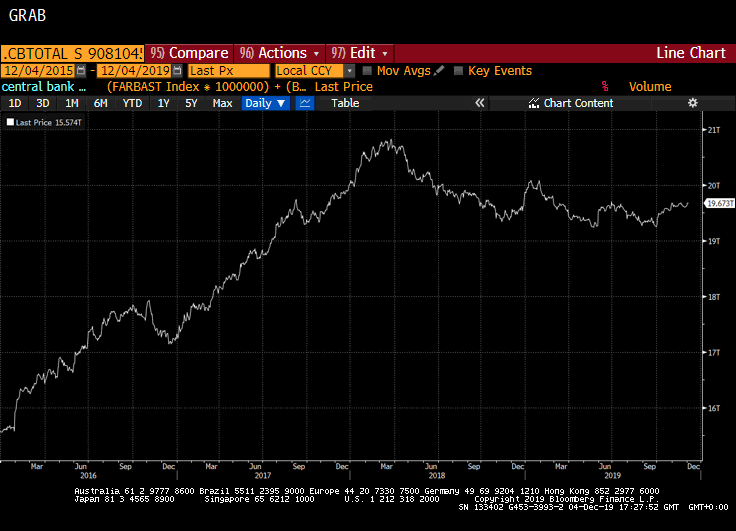DoubleLine Joins IMF in Fretting About Dollar Loans Outside U.S.
This article by Vivien Lou Chen for Bloomberg may be of interest to subscribers. Here is a section:
The cost of dollar funding for non-American banks can change rapidly because it’s sensitive to monetary conditions in the U.S. and abroad. September’s repo turmoil showed the speed with which a spillover could occur between dollar funding and currency markets. Within a day of the sudden surge in the overnight rate on Treasury repurchase agreements that began Sept. 16, the cost to borrow greenbacks while lending euros for a week almost doubled.
For DoubleLine’s Campbell, “the analysis of currency mismatches and asset/liability funding mismatches is an integral part of our investment process as we evaluate these risks on a country-by-country and security-by-security basis.”
At issue is what might happen when foreign banks get caught in a liquidity squeeze, and their sources of dollar funding dry up quickly, he added.
“When we go through the next downturn, a lot of activities are going to be exposed as being problematic,” he said. “The risk is that it could contribute to an even bigger fall in economic activity.”
The IMF first started worrying about the mismatch in Dollar funding requirements and supply back in June. The freezing up of the repo market in October vindicated the view that supply of Dollars was inadequate for the needs of the global economy. The willingness of the Fed to step in and provide $300 billion, to date, is a clear indication they are aware of the problem this condition represents and will act accordingly.
They have so far refused to confirm a standing repo facility is in place because that represents an unlimited call on the Fed’s balance sheet. Nevertheless, the de facto condition is the same. There is no way the Fed can tolerate having 1000 basis arbitrage opportunities emerge in the repo market because of a lack of liquidity. That makes a nonsense of interest rate policy which is what they are supposed to have control over. The Fed is effectively the central bank to the world and that requires it provide ample liquidity. That means the size of the balance sheet is only going to increase.
As David was fond of saying, “Monetary policy beats most other factors most of the time.”. Investors were well aware of the correlation between the size of the Fed’s balance sheet and the performance of the S&P500 in 2017 when both were rising together. The Fed’s massive capital infusion since October and the coincident rally in the stock market suggest this relationship is relevant once more.

The total assets of major central banks composite index is back testing the $19.7 trillion figure which has offered resistance over the last year. A sustained move above that level would confirm more than temporary expansion is underway.


